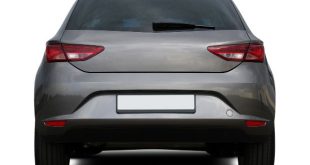Finding the right insurance policy can feel like a daunting task to most. With so many companies claiming the best coverage and the best prices, it can be challenging to know where to even start. Fortunately, there is a lot of information out there to get you started. Avoid the common pitfalls and make a confident, informed choice when you compare car insurance policies.
Buying the Minimum Amount of Coverage
The low price of purchasing the minimum amount of coverage may be tempting to some, but inevitably this is a mistake. In almost all cases, just the minimum is far from enough. The worst thing here is the lack of meaningful liability insurance. This covers damage to another vehicle you may collide with. However, minimum policies do not cover much. So, in addition to paying for repairs on your own car, you might end up footing the bill for the other person’s repairs as well.
Buying an Excessive Amount of Coverage
The flip side of this is purchasing too much coverage for your vehicle. As a rule, you should not pay more than one-tenth of the value of your car in insurance. This is typically easy to find. However, it can create problems if your car is old, outdated, or prone to breakdowns. If you are paying too much and cannot find coverage in this range, consider replacing your vehicle.
Choosing the Wrong deductible
Your deductible is a crucial aspect to examine when trying to find the best car insurance. Usually, a high deductible will mean a lower insurance price, but more money is spent out of pocket. Conversely, a low deductible will keep your insurance price high. Do not be tempted by the prices a high deductible will provide. The coverage will be meaningless when using your insurance after a collision, and you cannot afford your deductible.
What Kind of Driver Are You?
In life, there are few one-size-fits-all solutions, and the same is true for car insurance. Many companies have programs that reward safe or defensive drivers. For example, the State Farm Drive Safe & Save program rewards drivers for things such as avoiding late-night driving, avoiding hard braking and cornering, and refraining from speeding. The Progressive Snapshot app is quite similar. It includes a small device that plugs into your car to track your habits. Good habits yield discounts and lower rates; however, the inverse is also true. Drivers with less savory driving habits have reported increases in their rates. Be mindful of how you drive. Consider how your current driving habits would factor into a plan like this before committing to one.
Not Looking for Discounts
Lastly, a common pitfall when comparing rates is failing to look for discounts. Many companies have different programs for different drivers. For example, USAA offers the lowest rates for active military personnel, veterans, and their families. With an average annual cost of $1,152, it is easy to see why it is the top pick for the military. GEICO might be the option for you if you have bad credit, as this insurer works with customers with FICO scores as low as 300 points.
If you have a DUI on your record, State Farm will increase your rates by an average of 38%. This is excellent, as other companies can increase rates by up to 80%. Nationwide is often hailed as the best choice for seniors, with an average annual fee of just $986 for customers more than 60 years old. Erie Insurance is often the best pick for those looking to insure a teen driver, offering teen coverage at an annual cost of $2,532. You will not know until you ask, so be sure to call around and check what discounts are available to you.
Choosing the right insurance can feel overwhelming, but remember knowledge is your best weapon. Work methodically. Start by determining what you can afford. Then discern what kind of driver you are and what discounts might apply to you. Be sure to follow the above tips to avoid some common pitfalls. You can even try checking out car insurance quotes without giving personal information. With some business savvy and research, you should be well equipped to make an informed decision.
 World inside pictures Collect and share the best ideas that make our life easier
World inside pictures Collect and share the best ideas that make our life easier








